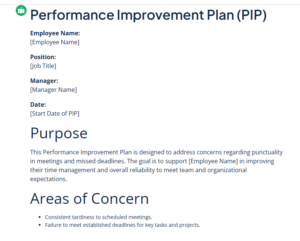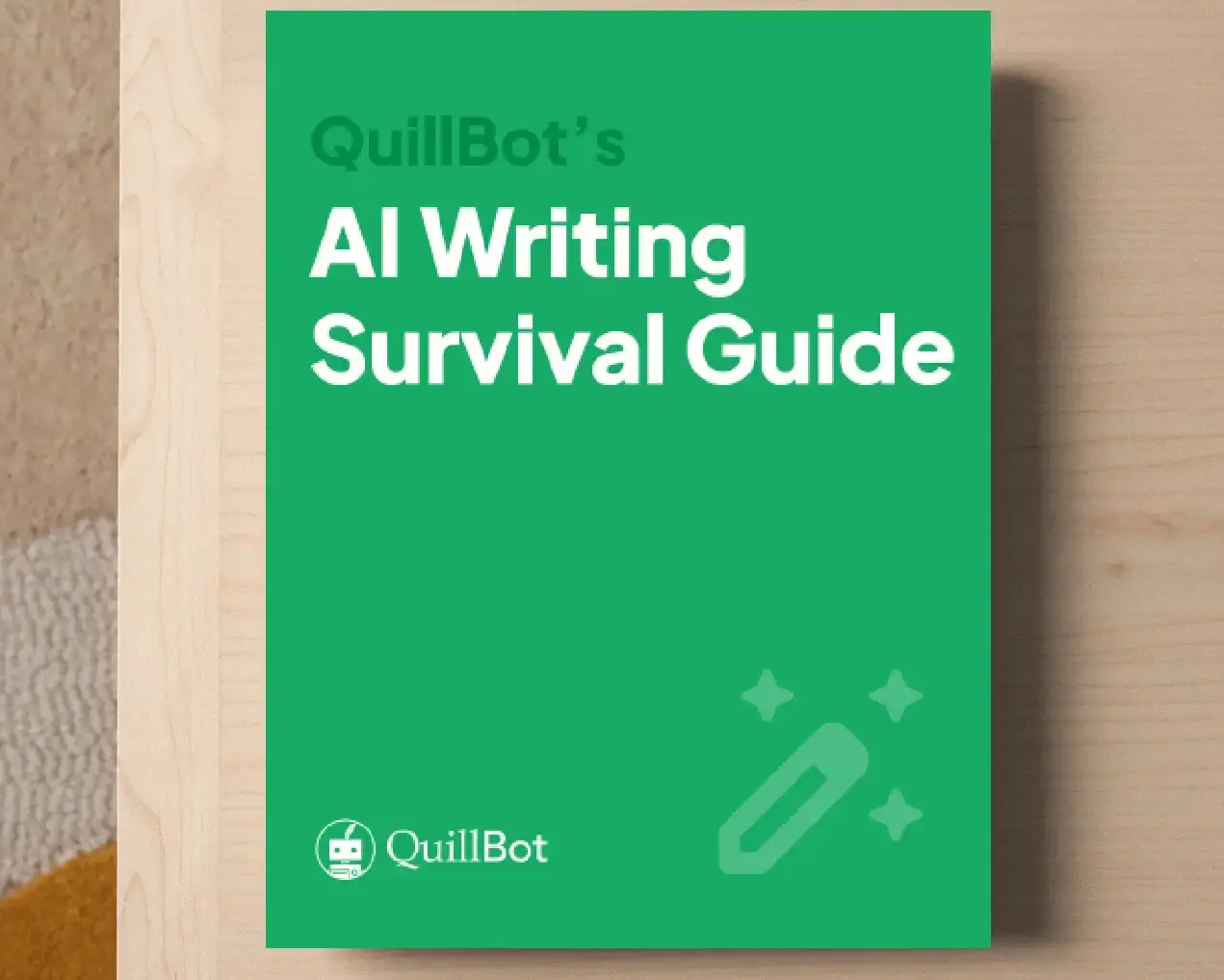Create a Performance Improvement Plan with AI
When someone in your team is underperforming, having the conversation about what needs to be improved isn’t easy. But a well-structured performance improvement plan (PIP) can turn a difficult discussion into a clear, constructive path forward. A strong PIP sets clear expectations, outlines measurable goals, and defines what success looks like, giving employees the support they need to improve.
Rather than leaving team members unsure of how to fix performance issues, a PIP template offers step-by-step guidance as part of a transparent process. The key is knowing how to write a PIP that’s detailed, fair, and properly documented.
QuillBot’s AI performance improvement plan generator simplifies the process, helping managers quickly create thorough, appropriately-worded PIPs.
How to write a performance improvement plan
Writing a performance improvement plan takes care and precision. Follow these steps to create a PIP that leads to tangible results:
1. Identify specific performance issues
Start with facts, rather than subjective judgments. For example, “Missed 4 out of 10 project deadlines in Q2” instead of “Needs to be more organized” or “Has time management issues.” Include dates, incidents, and patterns to make the issue clear and actionable, not personal.
2. Set clear, measurable goals
Define concrete targets, following the SMART goals criteria: specific, measurable, achievable, relevant, and time-bound. For example, “Reply to internal emails within 24 hours,” or “Submit weekly status reports by Friday 5 PM,” instead of “Be more responsive.”
3. Outline support and resources
List the tools, training, or mentoring you’ll provide to help the employee improve. For instance, “Attend one-on-one coaching sessions every Tuesday” or “Access to new project management software with onboarding support.” This shows you’re investing in their success, not just handing down demands.
4. Set a timeline and define outcomes
Most PIPs run 30–90 days, with weekly or bi-weekly check-ins. Clearly explain:
- What success looks like
- What happens if goals aren’t met
Keep the tone supportive, not punitive. The aim is improvement, not building a paper trail for dismissal. Use clear, respectful language and encourage open dialogue to clarify expectations. And don’t forget to involve HR early to ensure the plan is fair and compliant.
Using a performance improvement plan generator
While the steps above provide a solid framework, creating a thorough, well-written PIP can still be time-consuming and challenging. Even experienced managers sometimes struggle with finding the right tone or structuring goals effectively.
AI-powered performance improvement plan generators can help streamline this process. Tools like QuillBot’s performance improvement plan generator help you develop specific performance goals, set realistic timelines, and maintain professional language throughout, ensuring consistency across your team.
Here’s how it works:
- Enter your idea. Start by describing the specific performance issue you want to address. For example:
The tool will then present you with a PIP like this:
- Tweak your results. Adjust the tone, focus, or milestones to fit the employee’s role and needs. For example, you can ask the tool to rephrase broad issues as SMART goals with clear, actionable language:
- Get your plan. Once you’re happy with the details, copy your personalized PIP and share it confidently. A clear, well-structured plan makes tough conversations easier and helps everyone focus on moving forward.
Frequently asked questions about performance improvement plans
- What is a performance improvement plan?
-
A Performance Improvement Plan (PIP) is a structured document that outlines specific areas where an employee needs to improve, along with clear goals, support strategies, and timelines. It’s designed to help team members course-correct with clarity, not to catch them off guard.
Need help drafting one? Try QuillBot’s AI performance improvement plan generator to create a customized PIP plan in minutes.
- What should I include in a performance improvement plan?
-
A performance improvement plan (PIP) should include a clear description of the issue, performance expectations, specific SMART goals, timelines for progress, and follow-up steps. It’s important to keep the language clear, focused, and actionable.
Want a faster way to draft it? Use QuillBot’s PIP generator to get a professional plan in less time.
Cite this Quillbot article
We encourage the use of reliable sources in all types of writing. You can copy and paste the citation or click the "Cite this article" button to automatically add it to our free Citation Generator.
QuillBot. (2025, August 14). Create a Performance Improvement Plan with AI. Quillbot. Retrieved November 16, 2025, from https://quillbot.com/blog/ai-writing-tools/how-to-use-a-performance-improvement-plan-generator/




